Nuclear research reactors
Nuclear research reactors do not generate electricity. Instead, they produce neutrons primarily for research, radioisotope production, and nuclear education and training. Since 1942, about 884
Nuclear research reactors do not generate electricity. Instead, they produce neutrons primarily for research, radioisotope production, and nuclear education and training. Since 1942, about 884
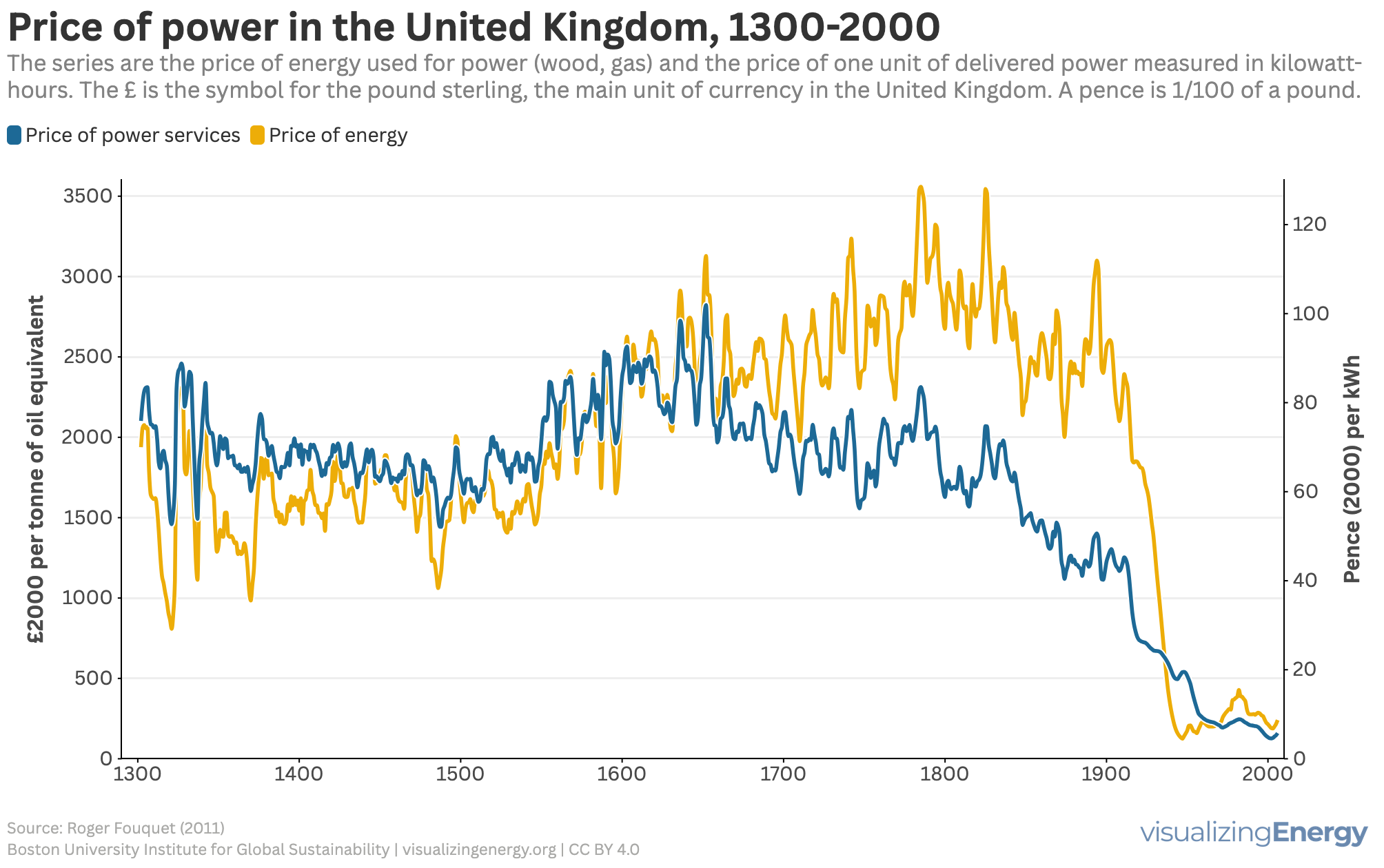
One outstanding feature of historical energy transitions was the change in the cost, power, and efficiency of the energy converters that humans used to perform

Modern wind energy in the United States began in California in the early 1980s with several wind farms in mountain passes in central and Southern
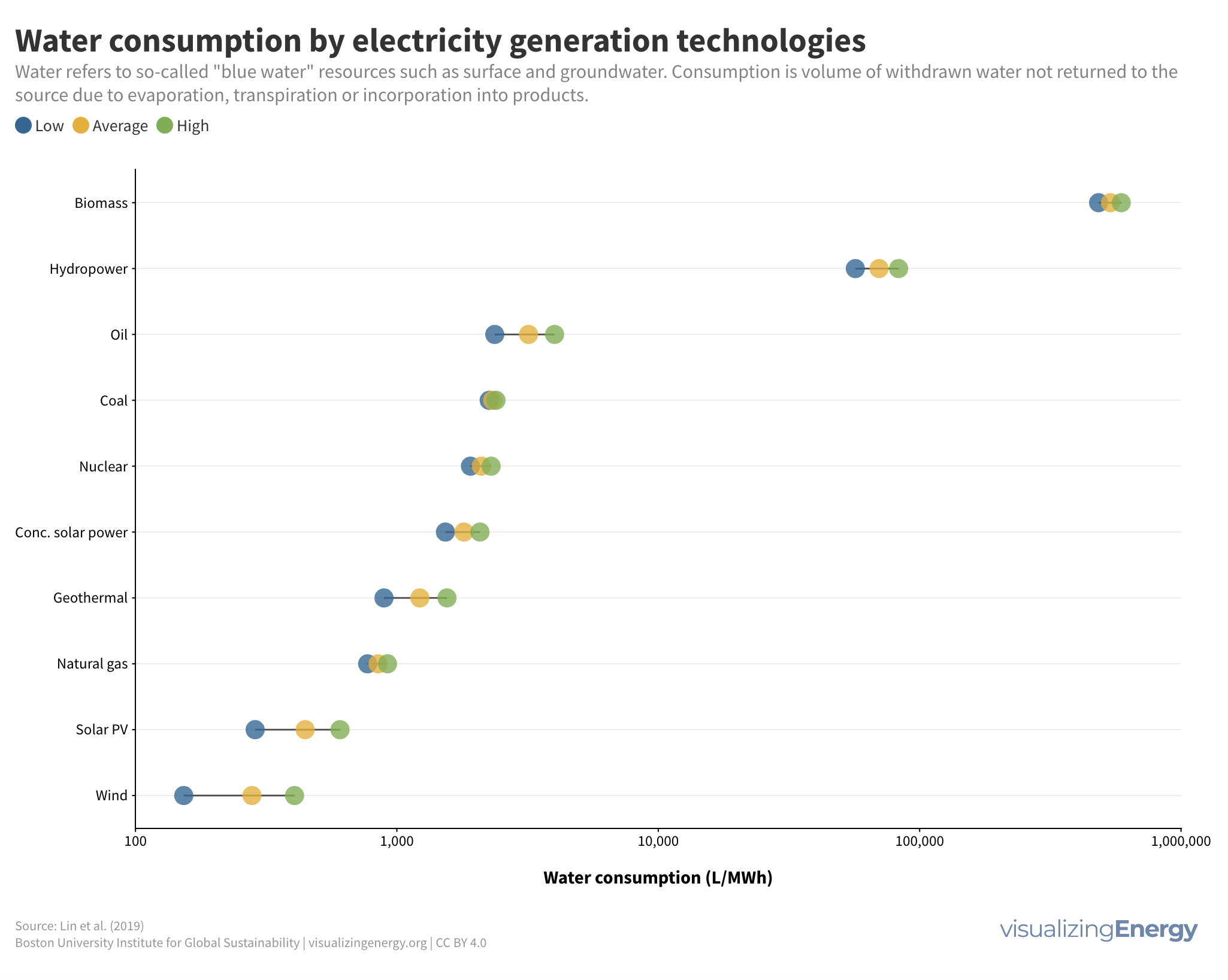
In the twentieth century, global energy use grew tenfold, and global water use grew sixfold. Population growth and rising affluence are expected to drive continued
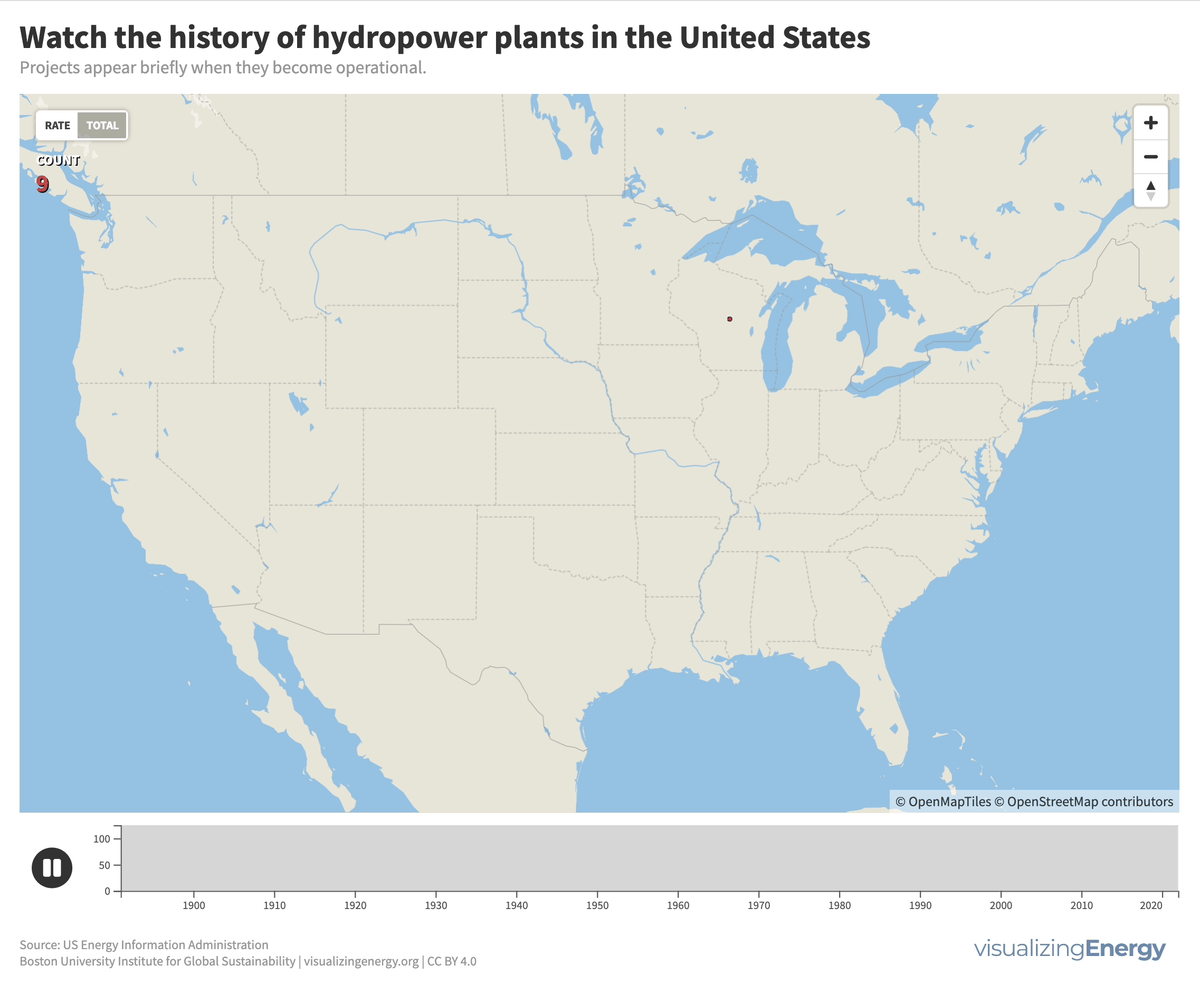
More than 4000 hydroelectric dams have been built in the United States since the late 19th century, representing six percent of all-time additions to electric generation capacity from all sources.
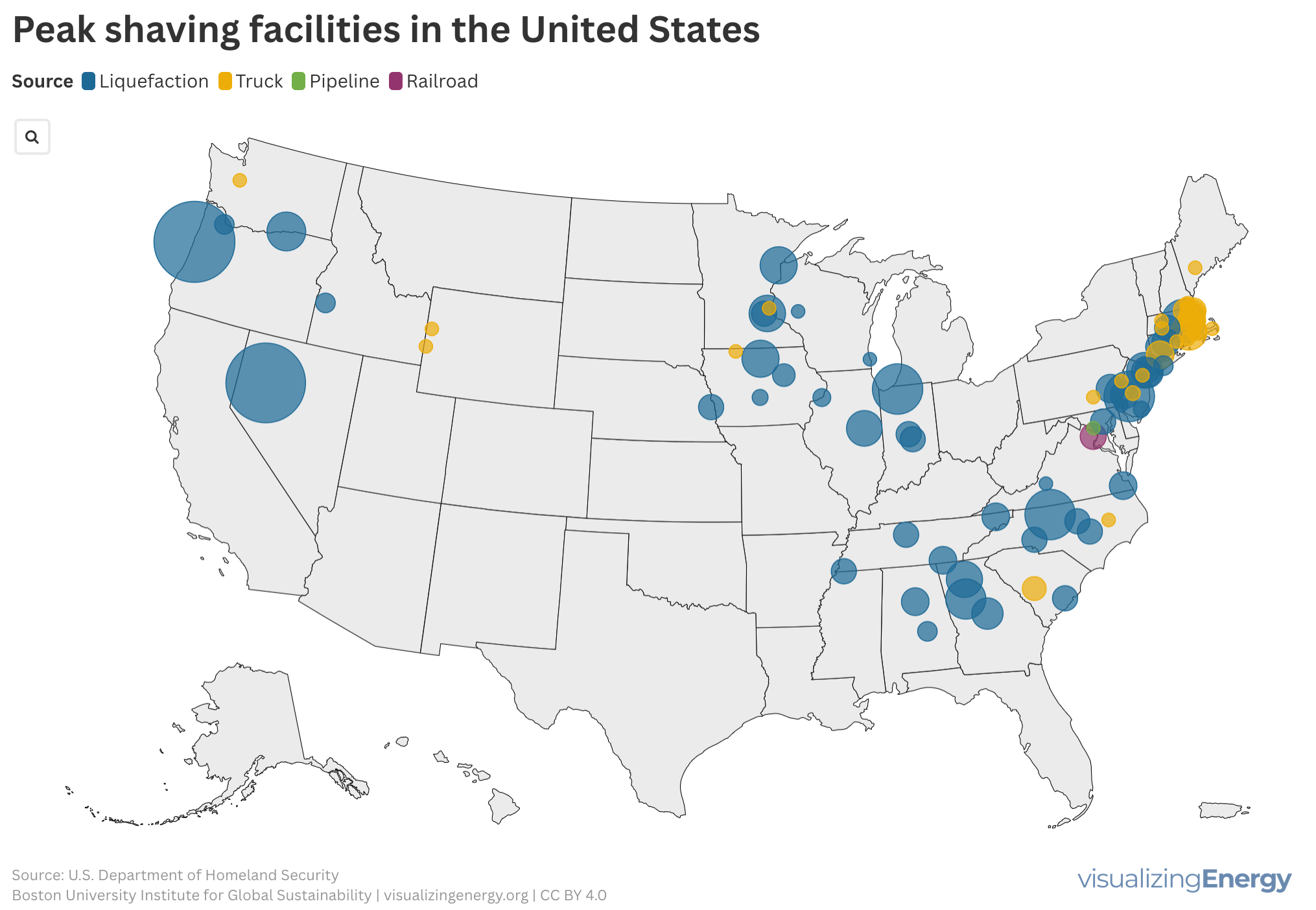
A peak shaving facility is an energy system that balances fuel demand fluctuations, particularly for natural gas during peak usage times. It stores liquefied natural gas (LNG) at low demand and releases it when needed. Commonly found in metropolitan areas and regions with pipeline limitations, these facilities aid in preventing shortages and price spikes.
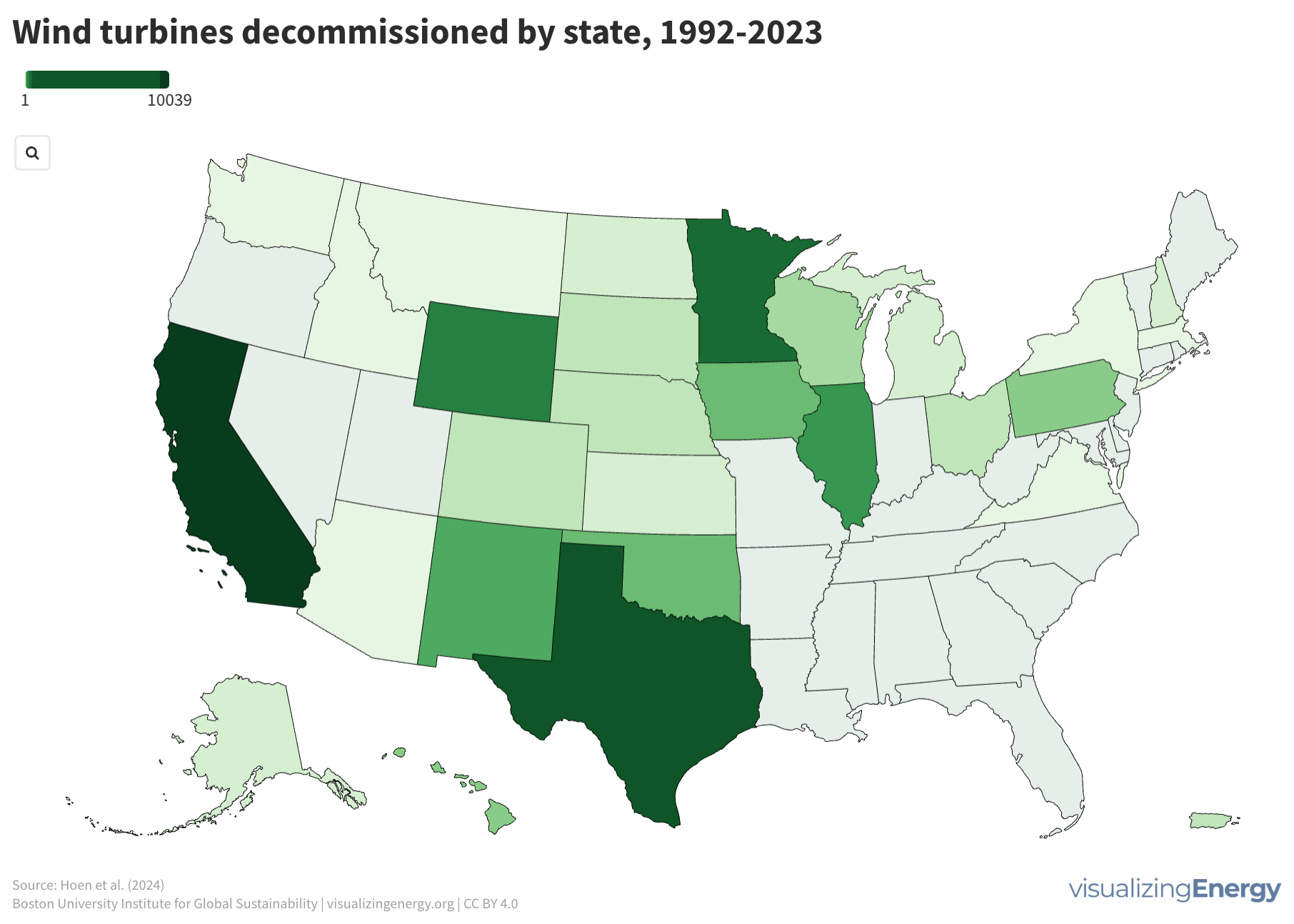
More than 86,000 wind turbines were built in the US from 1981 to early 2024, with over 11,000 decommissioned since 1992. Decommissioning presents waste management challenges, especially with the difficult-to-recycle turbine blades. Research is ongoing for recyclable blades, such as those made from plant material, to address the issue.
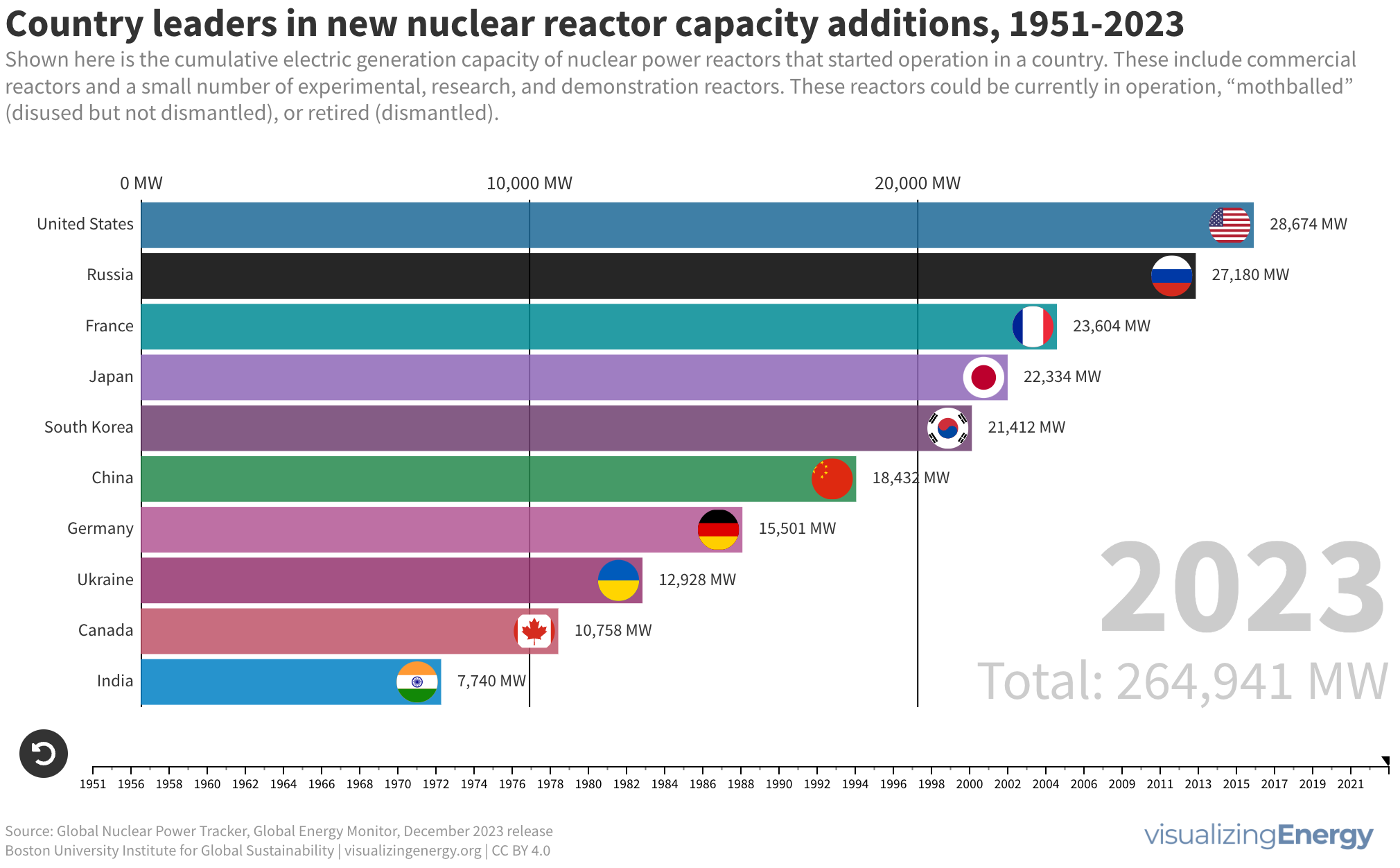
Nuclear power plants have a nameplate capacity of about 390 gigawatts and supply 10% of the world’s electricity. The United States, Russia, France, Japan, South Korea, and China account for 36% of global capacity. Capacity additions have declined due to accidents, rising costs, public opposition, and the increasing attractiveness of renewable power generation.
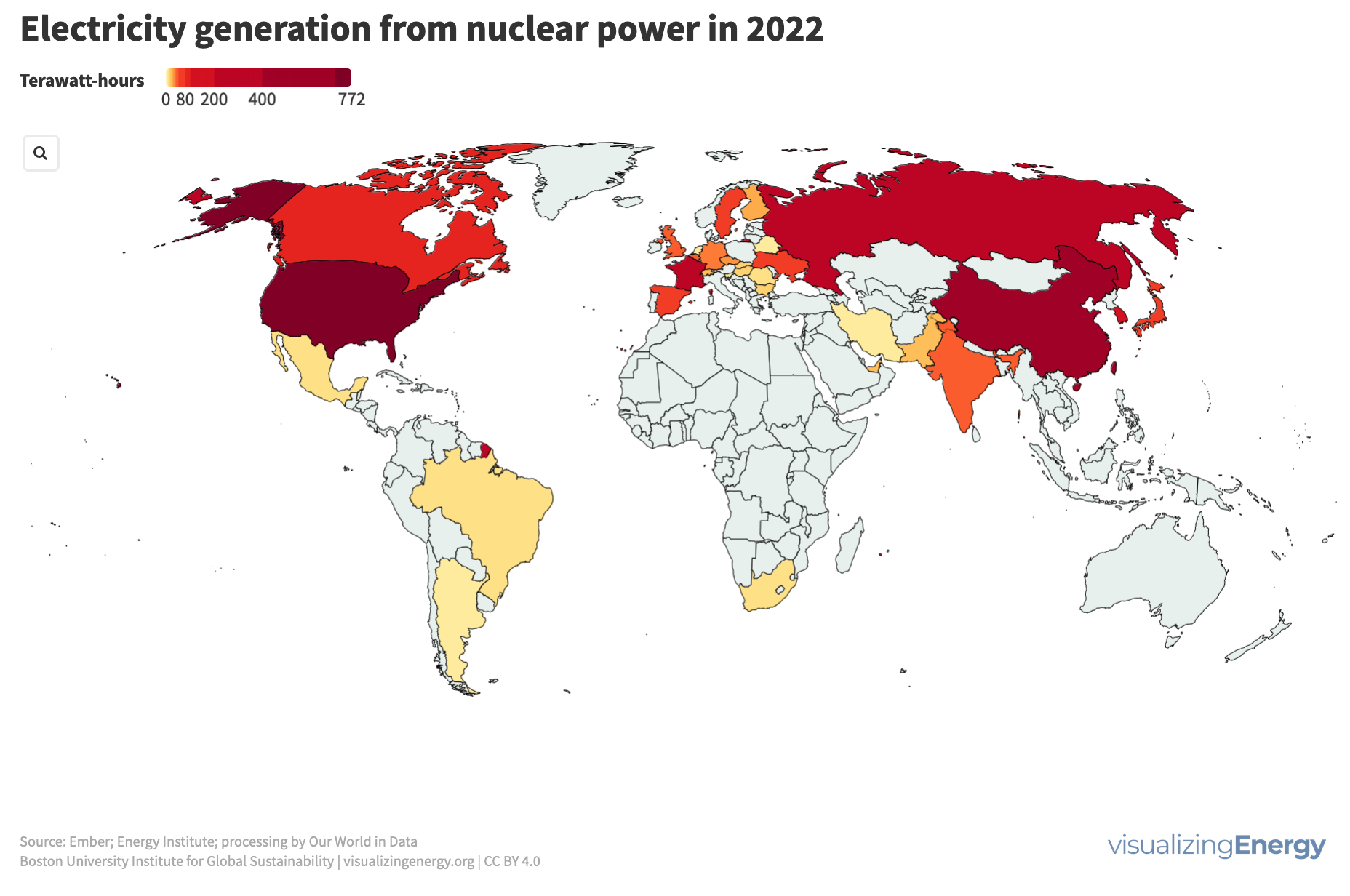
In 2024, 440 nuclear power reactors operated in 32 countries, generating 10% of the world’s electricity. The US, China, France, Russia, and South Korea are the top generators. France leads in nuclear power usage (63%), followed by Slovakia, Hungary, Belgium, and Slovenia. Ukraine’s nuclear operations were impacted by the 2022 Russian invasion, causing fluctuating reactor activity.

The global nuclear power industry has experienced significant shifts since its post-WWII expansion, with a sharp decline in new reactor starts from the 1990s onwards. More recently, some countries have sought to replace fossil fuels with nuclear power to address emissions and energy security. However, challenges remain in demonstrating the promised benefits of new reactor designs.